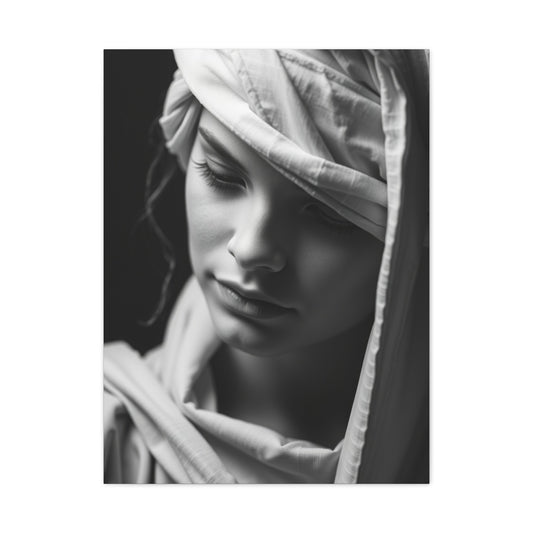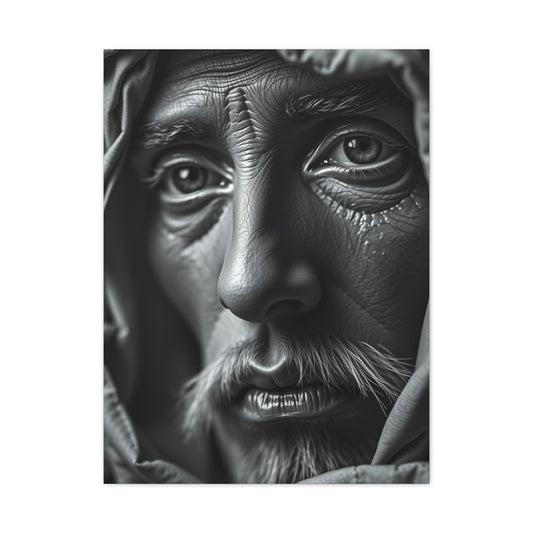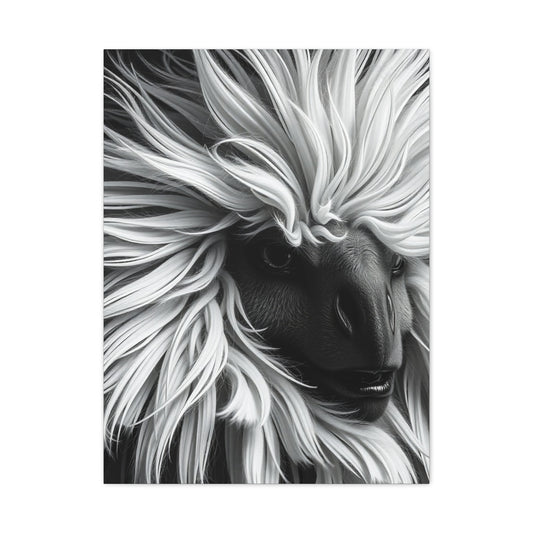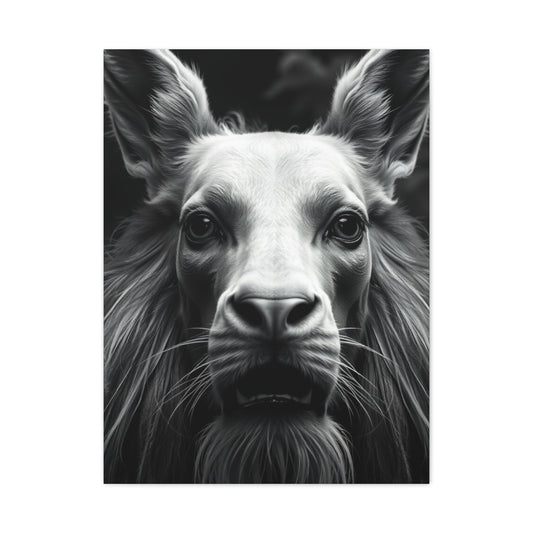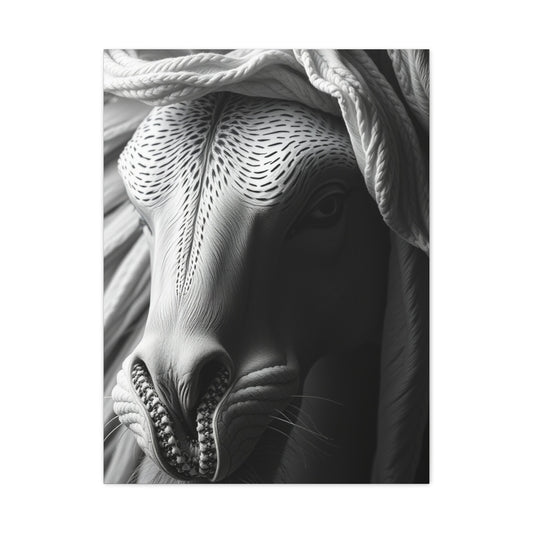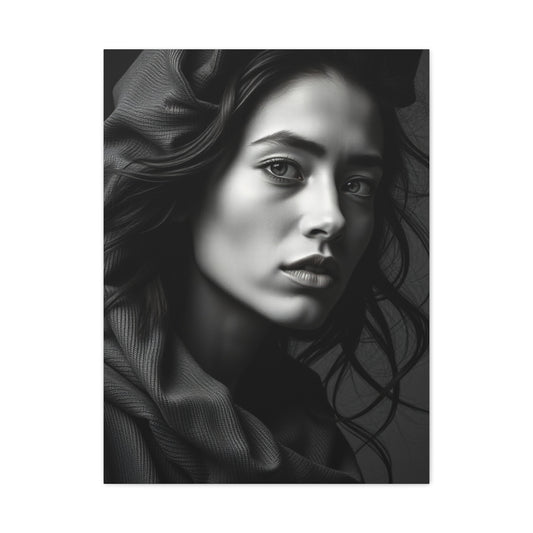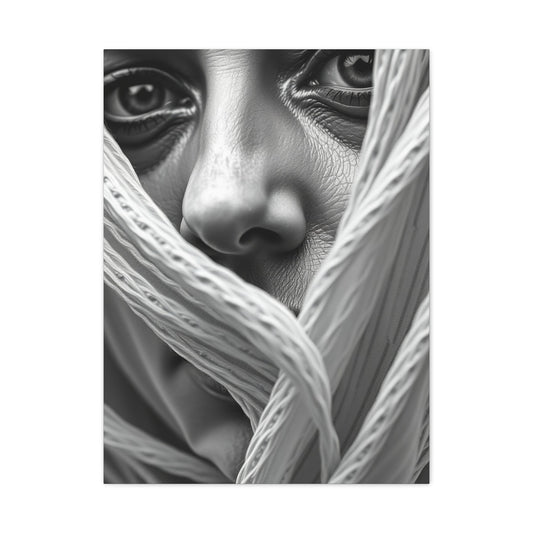The Profound Impact of Black-White Minimalism Wall Art in Contemporary Interior Design
The realm of black-white minimalism wall art represents far more than a mere aesthetic choice; it embodies a profound philosophical approach to visual communication and spatial harmony. This sophisticated design movement challenges conventional notions of decorative complexity, instead embracing the extraordinary power of restraint, precision, and intentional simplicity. Through the deliberate reduction of chromatic elements to their most essential forms, monochromatic wall art achieves something remarkable: it transforms empty walls into contemplative canvases that speak volumes through their deliberate silence.
The foundation of this artistic philosophy rests upon the principle that true elegance emerges not from abundance but from the masterful curation of elements. Each black stroke against white space, every geometric form suspended in emptiness, and all negative areas between compositional elements serve specific purposes in creating visual narratives that transcend traditional decorative boundaries. This approach recognizes that the human eye and mind crave visual rest, particularly in our increasingly complex and overstimulated contemporary environments.
Black-white minimalism wall art operates on the understanding that contrast creates clarity, that simplicity breeds sophistication, and that empty space possesses its own inherent beauty. Artists working within this paradigm recognize that by stripping away superfluous elements, they can focus attention on fundamental compositional principles: line, form, texture, proportion, and spatial relationships. This reductive approach paradoxically enriches the viewing experience by allowing observers to engage more deeply with fewer, more carefully considered elements.
The psychological impact of monochromatic wall art cannot be understated. These pieces function as visual anchors in interior spaces, providing stability and calm in environments that might otherwise feel chaotic or overwhelming. The stark contrast between black and white creates immediate visual interest while simultaneously promoting a sense of order and tranquility that supports mental well-being and creative thinking.
Historical Evolution of Minimalist Monochromatic Art Movements
The journey toward contemporary black-white minimalism wall art traces its lineage through numerous significant artistic movements, each contributing essential elements to our current understanding and appreciation of monochromatic expression. The earliest influences can be found in traditional Eastern aesthetics, particularly Japanese Zen philosophy and Chinese ink painting traditions, which emphasized the profound beauty of simplicity and the expressive potential of negative space.
During the early twentieth century, European avant-garde movements began exploring radical simplification as a response to ornate Victorian and Edwardian decorative traditions. The Bauhaus school, founded in 1919, revolutionized thinking about form and function, promoting the idea that objects and artworks should serve purposes beyond mere decoration. This philosophy directly influenced the development of minimalist approaches to wall art, suggesting that visual elements should possess both aesthetic and functional value within architectural spaces.
The De Stijl movement, led by artists such as Piet Mondrian and Theo van Doesburg, further advanced monochromatic principles by reducing visual vocabulary to fundamental geometric forms and primary colors. While not exclusively black and white, this movement established crucial precedents for understanding how limited color palettes could achieve maximum visual impact through careful composition and proportion.
Abstract Expressionism of the 1940s and 1950s contributed another layer to the evolution of minimalist wall art, demonstrating how emotional expression could emerge from gestural marks and simplified forms. Artists working in predominantly black and white palettes proved that monochromatic works could convey profound emotional depth and complexity without relying on chromatic variety.
The official Minimalist movement of the 1960s and 1970s crystallized many concepts that continue to influence contemporary black-white wall art. Artists like Donald Judd, Dan Flavin, and Sol LeWitt stripped artworks down to essential geometric forms, emphasizing the importance of materials, space, and viewer perception. This period established many of the theoretical foundations that continue to guide contemporary minimalist wall art production.
Contemporary digital art and printmaking technologies have expanded possibilities for creating and reproducing minimalist monochromatic works, making sophisticated black-white wall art more accessible to broader audiences while maintaining the philosophical integrity of the minimalist approach.
The Psychological Architecture of Monochromatic Visual Experiences
Understanding the psychological impact of black-white minimalism wall art requires exploration of how the human brain processes visual information and responds to different types of aesthetic stimulation. Neuroscientific research has revealed fascinating insights into why monochromatic compositions possess such powerful effects on mood, cognition, and overall psychological well-being.
The contrast between black and white creates what psychologists term "visual salience" – the quality that makes certain elements stand out from their surroundings and capture attention. However, unlike the jarring contrast of complementary colors, the black-white relationship provides what researchers describe as "comfortable contrast" – stimulating enough to maintain visual interest without causing sensory overload or fatigue.
Monochromatic wall art activates specific neural pathways associated with pattern recognition and spatial processing. When viewers encounter simplified black and white compositions, their brains can process information more efficiently, reducing cognitive load and promoting states of relaxation and contemplation. This neurological response explains why many people report feeling calmer and more focused in spaces decorated with minimalist monochromatic artwork.
The absence of color information in black-white wall art paradoxically enhances certain types of visual perception. Without chromatic distractions, viewers become more sensitive to subtle variations in texture, form, line quality, and spatial relationships. This heightened sensitivity can lead to deeper aesthetic appreciation and more meaningful engagement with artistic content.
Research in environmental psychology has demonstrated that exposure to minimalist visual environments can reduce stress hormones, lower blood pressure, and improve cognitive function. Black-white wall art contributes to these benefits by creating visual environments that support rather than compete with human psychological needs for clarity, order, and beauty.
The meditative qualities of monochromatic art stem partly from its relationship to traditional contemplative practices. Many spiritual and philosophical traditions emphasize the value of focused attention and simplified sensory experiences. Black-white minimalism wall art provides modern practitioners with opportunities for visual meditation and contemplative engagement within contemporary living and working environments.
Contemporary Design Integration Strategies for Monochromatic Wall Art
Successfully incorporating black-white minimalism wall art into contemporary interior spaces requires sophisticated understanding of how these pieces interact with architecture, lighting, furniture, and human behavior patterns. The integration process goes far beyond simply hanging artwork on walls; it involves creating cohesive visual environments that enhance both aesthetic appeal and functional utility.
Scale relationships represent one of the most critical considerations when selecting and positioning monochromatic wall art. Large-scale pieces can transform entire rooms by creating focal points that anchor furniture arrangements and define spatial hierarchies. Conversely, smaller works function effectively in series or clusters, building visual rhythms that guide movement through spaces and create opportunities for intimate viewing experiences.
Lighting plays an absolutely crucial role in the successful presentation of black-white wall art. Natural light reveals subtle textural qualities and creates dynamic shadow patterns that change throughout the day, adding temporal dimensionality to static compositions. Artificial lighting must be carefully calibrated to avoid creating glare on glossy surfaces while ensuring adequate illumination for comfortable viewing.
The architectural context significantly influences how monochromatic wall art functions within interior environments. High-contrast black and white pieces can soften hard architectural edges, while geometric minimalist works can emphasize and complement contemporary architectural features. Understanding these relationships allows designers to create harmonious dialogues between artwork and built environments.
Furniture and accessory relationships require careful consideration when integrating black-white wall art. Monochromatic pieces can serve as neutral backdrops that allow colorful furniture and objects to stand out, or they can create sophisticated tonal harmonies with similarly restrained furnishing palettes. The key lies in understanding desired visual hierarchies and emotional atmospheres.
Spatial flow and circulation patterns influence optimal placement of minimalist wall art. Pieces positioned along primary movement paths should be readable at various viewing distances and angles, while artworks in more intimate settings can reward close examination with subtle details and textural qualities.
The Craft and Technique Behind Minimalist Monochromatic Creation
The creation of compelling black-white minimalism wall art demands mastery of fundamental artistic techniques while embracing philosophical principles of reduction and refinement. Artists working in this medium must develop extraordinary sensitivity to subtle variations in tone, texture, line quality, and compositional balance, as they cannot rely on color to create visual interest or emotional impact.
Traditional printmaking techniques such as etching, lithography, and screen printing offer unique opportunities for exploring monochromatic expression. The inherent limitations and characteristics of these processes can inspire creative solutions and unexpected aesthetic discoveries. Etching, for example, allows for incredibly subtle tonal gradations and linear variations that can create rich textural experiences within seemingly simple compositions.
Contemporary digital creation tools have revolutionized possibilities for producing minimalist monochromatic artwork. Digital manipulation allows artists to achieve precise control over contrast levels, edge qualities, and compositional relationships while maintaining the philosophical integrity of minimalist approaches. However, successful digital minimalism requires the same aesthetic sensitivity and compositional sophistication as traditional media.
The role of paper, canvas, and substrate selection cannot be overlooked in minimalist wall art creation. Surface textures, absorbency characteristics, and reflective qualities all contribute to the final aesthetic impact of monochromatic works. Smooth, matte surfaces emphasize graphic qualities, while textured substrates can add tactile dimensionality that enriches viewer engagement.
Framing and presentation considerations become particularly important for minimalist works, as elaborate frames can overwhelm subtle compositions while inappropriate presentations can diminish aesthetic impact. Many contemporary minimalist artists favor simple, clean framing solutions that support rather than compete with artwork content.
The editing and selection process represents perhaps the most challenging aspect of creating effective minimalist wall art. Artists must develop the confidence and judgment necessary to eliminate elements that don't serve essential compositional purposes, even when those elements might be technically skillful or personally meaningful.
Architectural Harmony and Spatial Relationships in Minimalist Design
The relationship between black-white minimalism wall art and architectural environments represents a sophisticated dialogue between artistic expression and built space functionality. This interaction goes beyond simple decoration to encompass fundamental questions about how visual elements can enhance, complement, or transform the experience of inhabiting architectural environments.
Contemporary architecture increasingly embraces minimalist principles, creating natural partnerships with monochromatic wall art. Clean lines, simplified forms, and neutral color palettes in modern buildings provide ideal contexts for black-white artistic expressions. However, successful integration requires understanding how artwork scale, positioning, and content relate to architectural proportions and material characteristics.
Ceiling heights significantly influence optimal artwork proportions and placement strategies. High ceilings can accommodate large-scale pieces that might overwhelm more intimate spaces, while lower ceilings benefit from horizontal compositions that emphasize breadth rather than height. Understanding these proportional relationships prevents common mistakes that can make spaces feel unbalanced or uncomfortable.
Window relationships and natural light patterns create dynamic conditions that affect how monochromatic wall art appears throughout daily and seasonal cycles. Artworks positioned to interact with changing light conditions can provide temporal variety and interest, transforming static compositions into dynamic environmental elements.
Material relationships between artwork substrates and architectural finishes can create harmonious or contrasting effects depending on desired outcomes. Smooth, matte artwork surfaces might complement polished architectural materials through contrast, while textured pieces could echo rough stone or concrete finishes through visual similarity.
The concept of "visual weight" becomes particularly important when balancing monochromatic artwork with architectural features. Dark, bold compositions carry more visual weight than light, delicate pieces, and this characteristic must be considered when creating balanced, harmonious interior environments.
Psychological Sanctuaries: Creating Contemplative Spaces Through Monochromatic Art
The power of black-white minimalism wall art to create psychological sanctuaries within contemporary living and working environments represents one of its most valuable contributions to modern design practice. These artworks function as visual anchors that can transform chaotic or stressful environments into spaces that support contemplation, creativity, and emotional well-being.
The concept of visual rest becomes particularly relevant in our overstimulated contemporary culture. Monochromatic wall art provides eyes and minds with opportunities to pause, focus, and engage with simplified visual experiences that promote relaxation and mental clarity. This quality makes minimalist artwork particularly valuable in bedrooms, meditation spaces, and work environments where concentration and calm are priorities.
Biophilic design principles suggest that humans possess innate connections to natural patterns and forms. While black-white minimalism wall art may seem removed from nature, abstract representations of natural phenomena – cloud formations, water patterns, organic growth structures – can provide psychological benefits associated with nature connection while maintaining sophisticated minimalist aesthetics.
The role of negative space in creating contemplative environments cannot be overstated. Empty areas within compositions and around artwork installations provide visual breathing room that supports psychological relaxation and allows viewers to project their own interpretations and emotional responses onto artistic content.
Monochromatic artwork can function as meditation focal points, providing visual anchors for mindfulness practices and contemplative exercises. The simplified visual vocabulary of black-white compositions makes them particularly suitable for this purpose, as they offer sufficient visual interest to maintain attention without creating distracting complexity.
The Intersection of Technology and Traditional Minimalist Expression
Contemporary black-white minimalism wall art exists at a fascinating intersection between traditional artistic practices and cutting-edge digital technologies. This convergence has created unprecedented opportunities for artistic expression while raising important questions about authenticity, craftsmanship, and the role of technology in aesthetic creation.
Digital printing technologies have democratized access to high-quality minimalist wall art by making professional-level reproduction possible at reasonable costs. However, successful digital minimalism requires sophisticated understanding of how digital processes affect tonal relationships, edge qualities, and overall aesthetic impact. Not all minimalist compositions translate effectively to digital formats.
The rise of algorithmic and generative art has introduced new possibilities for creating minimalist compositions through computational processes. While some purists question whether computer-generated works can possess the intentionality and sensitivity associated with traditional minimalist philosophy, others argue that algorithmic approaches can reveal new possibilities for exploring fundamental aesthetic principles.
Interactive and dynamic digital wall art represents an emerging frontier in minimalist expression. These works can respond to environmental conditions, viewer presence, or temporal changes while maintaining philosophical commitments to simplicity and restraint. The challenge lies in ensuring that technological capabilities serve rather than overwhelm aesthetic intentions.
The preservation and archival considerations for digital minimalist artwork raise important questions about longevity and value. Unlike traditional media, digital works exist as code and data rather than physical objects, requiring different approaches to conservation and authentication.
Hybrid approaches that combine digital creation tools with traditional presentation methods offer promising directions for contemporary minimalist practice. These approaches can leverage technological precision and flexibility while maintaining connections to established traditions of craftsmanship and material sensitivity.
Cultural Perspectives on Monochromatic Aesthetic Traditions
The global appeal of black-white minimalism wall art reflects deep cultural traditions found across numerous societies and historical periods. Understanding these diverse cultural perspectives enriches appreciation of contemporary minimalist practices while revealing universal human responses to simplified visual experiences.
Eastern aesthetic traditions, particularly those rooted in Zen Buddhism and Taoist philosophy, have profoundly influenced contemporary minimalist approaches. The concept of "ma" – the meaningful use of emptiness and negative space – provides philosophical foundations for understanding how absence can be as expressive as presence in artistic compositions.
Scandinavian design traditions contribute valuable perspectives on how minimalist aesthetics can create warmth and humanity within simplified visual vocabularies. The concept of "lagom" – roughly translated as "just the right amount" – suggests approaches to aesthetic decision-making that prioritize balance and appropriateness over excess or deficiency.
Islamic geometric traditions offer sophisticated examples of how complex mathematical relationships can be expressed through simplified visual means. These traditions demonstrate how minimalist approaches can simultaneously achieve spiritual significance and intellectual engagement through careful attention to proportion and pattern.
Indigenous artistic traditions from various cultures provide examples of how essential forms and limited material palettes can convey profound cultural meanings and aesthetic experiences. These traditions remind contemporary practitioners that minimalism need not be cold or intellectual but can carry deep emotional and spiritual content.
The African aesthetic concept of "sankofa" – looking back to move forward – suggests how contemporary minimalist artists can honor traditional wisdom while creating innovative expressions appropriate to current contexts and needs.
Material Considerations and Substrate Exploration in Contemporary Practice
The selection and treatment of materials in black-white minimalism wall art significantly impact both aesthetic outcomes and long-term durability. Contemporary practitioners work with an expanded palette of substrate options, each offering unique characteristics that can enhance or complement minimalist artistic intentions.
Traditional paper substrates continue to play important roles in minimalist practice, but contemporary options include archival cotton papers, synthetic materials, and specialty surfaces designed specifically for fine art applications. Understanding how different paper characteristics affect ink absorption, texture, and aging properties becomes crucial for creating works that maintain their intended appearance over time.
Canvas and textile substrates offer opportunities for creating minimalist works with subtle textural qualities that reward close examination. The weave patterns and surface treatments of these materials can add dimensionality to otherwise flat compositions while maintaining overall aesthetic simplicity.
Metal and synthetic substrates enable creation of minimalist works with unusual surface qualities and durability characteristics. Aluminum, steel, and specialized polymer surfaces can support minimalist compositions while offering weather resistance for outdoor installations or commercial applications.
The role of mounting and presentation systems becomes particularly important for minimalist works, as inappropriate mounting can overwhelm subtle compositions. Contemporary mounting technologies offer numerous options for creating clean, professional presentations that support rather than compete with artistic content.
Environmental considerations increasingly influence material choices in contemporary minimalist practice. Artists and collectors are becoming more conscious of sustainability issues, leading to greater interest in recycled, renewable, and non-toxic substrate options that align with minimalist principles of thoughtful consumption.
The Economics and Market Dynamics of Minimalist Wall Art
Understanding the economic landscape surrounding black-white minimalism wall art provides valuable insights into how aesthetic movements develop, spread, and influence broader cultural practices. The minimalist art market reflects complex interactions between artistic innovation, consumer preferences, production technologies, and cultural trends.
The accessibility of minimalist aesthetics has contributed to broad market appeal across diverse demographic groups and price points. Unlike art movements that require specialized knowledge or cultural backgrounds for appreciation, minimalist works can be immediately understood and appreciated by viewers with varying levels of artistic sophistication.
Production efficiency represents another factor contributing to the economic viability of minimalist wall art. Simplified compositions often require fewer materials and less complex production processes than highly detailed works, making it possible to create high-quality pieces at various price points.
The role of digital reproduction technologies has significantly impacted the economics of minimalist art distribution. High-quality digital printing allows for cost-effective production of limited editions and custom sizes, making sophisticated minimalist works accessible to broader audiences while maintaining quality standards.
Collecting trends reflect growing appreciation for minimalist aesthetics among both established collectors and new market entrants. The timeless appeal of well-executed monochromatic works makes them attractive investment options for collectors seeking pieces that will maintain relevance and value over time.
The commercial interior design market represents a significant driver of demand for minimalist wall art. Hotels, restaurants, offices, and other commercial spaces increasingly favor simplified aesthetic approaches that create sophisticated atmospheres without overwhelming or distracting occupants.
Educational Applications and Developmental Benefits of Minimalist Art Engagement
The integration of black-white minimalism wall art into educational environments offers numerous opportunities for supporting learning, creativity, and cognitive development across age groups and subject areas. Research in educational psychology has revealed important connections between visual environments and learning outcomes, making thoughtful art selection an important consideration for educational facilities.
Visual attention and focus represent primary benefits of minimalist art in educational contexts. Simplified compositions help reduce visual distractions that can impair concentration and learning effectiveness. Students working in environments with appropriate minimalist artwork often demonstrate improved attention spans and better task performance.
The development of aesthetic sensitivity through exposure to high-quality minimalist works provides valuable educational benefits that extend beyond artistic appreciation. Learning to perceive subtle differences in line quality, proportion, and composition develops visual discrimination skills that support learning in mathematics, science, and other subjects requiring careful observation.
Critical thinking skills can be developed through engagement with minimalist artworks that require viewers to consider relationships between visual elements, interpret abstract content, and make aesthetic judgments. These cognitive processes transfer to academic subjects requiring analysis, interpretation, and evaluation skills.
Cultural awareness and global perspectives can be enhanced through exposure to minimalist traditions from various cultural backgrounds. Understanding how different societies approach simplified aesthetic expression broadens students' awareness of human creativity and cultural diversity.
The creation of minimalist artwork provides valuable hands-on learning opportunities that develop problem-solving skills, patience, and attention to detail. Students working within minimalist constraints learn to make thoughtful aesthetic decisions and understand the challenge of achieving maximum impact through minimal means.
Therapeutic Applications and Wellness Benefits of Monochromatic Visual Experiences
The therapeutic potential of black-white minimalism wall art has gained increasing recognition within healthcare, counseling, and wellness communities. Research in art therapy and environmental psychology provides compelling evidence for the healing and restorative properties of carefully selected minimalist visual experiences.
Stress reduction represents one of the most well-documented benefits of exposure to minimalist visual environments. The simplified visual vocabulary of black-white compositions can help lower cortisol levels, reduce anxiety, and promote physiological relaxation responses. These effects make minimalist artwork particularly valuable in healthcare facilities, counseling offices, and wellness centers.
Cognitive restoration theory suggests that certain types of visual experiences can help restore mental energy depleted by complex cognitive tasks. Minimalist wall art provides the "soft fascination" that research indicates is optimal for mental restoration – engaging enough to maintain attention while gentle enough to allow cognitive recovery.
Attention training and mindfulness practices can be supported through interaction with minimalist artworks that serve as meditation objects or focal points for contemplative exercises. The simplified visual content makes these works particularly suitable for individuals learning meditation techniques or seeking to develop mindfulness skills.
Depression and mood disorders may benefit from exposure to carefully selected minimalist visual environments. While excessive simplicity can contribute to feelings of emptiness or isolation, appropriately chosen minimalist works can provide sense of order, clarity, and hope that support emotional healing and resilience.
The universality of minimalist aesthetics makes them particularly valuable in multicultural healthcare and therapeutic settings where diverse populations may have different responses to culturally specific artistic content. Black-white minimalism can provide common ground for aesthetic appreciation across cultural backgrounds.
Sustainable Practices and Environmental Responsibility in Minimalist Art Production
Contemporary awareness of environmental issues has prompted important conversations about sustainability within the minimalist art community. The philosophical alignment between minimalist principles and environmental consciousness creates natural opportunities for developing more sustainable production and distribution practices.
Material selection represents a primary area where environmental considerations can align with minimalist aesthetics. Many sustainable materials – recycled papers, natural fiber canvases, plant-based inks – possess aesthetic qualities that complement minimalist sensibilities while reducing environmental impact.
The concept of "cradle to cradle" design thinking applies naturally to minimalist art production. Creating works that can be easily recycled, composted, or repurposed at the end of their useful lives reflects both environmental responsibility and minimalist principles of thoughtful consumption.
Local production and distribution networks support both sustainability goals and community engagement. Artists working with local suppliers and distributors can reduce transportation impacts while building relationships that strengthen local creative economies.
Digital distribution methods for reproducing minimalist works can significantly reduce environmental impacts associated with physical transportation and storage. However, these approaches must be balanced against considerations of aesthetic quality and cultural value.
The longevity and timeless appeal of well-executed minimalist works contribute to sustainability by creating objects that remain relevant and valued over extended periods. This characteristic reduces pressure for frequent replacement and supports more sustainable consumption patterns.
Future Directions and Emerging Trends in Minimalist Wall Art
The future of black-white minimalism wall art will likely be shaped by technological innovations, changing cultural values, and evolving understanding of how visual environments affect human well-being. Several emerging trends suggest directions for continued development and innovation within minimalist artistic practice.
Augmented reality and mixed reality technologies offer intriguing possibilities for creating dynamic minimalist experiences that can change and evolve over time while maintaining essential aesthetic principles. These technologies might enable minimalist works that respond to environmental conditions, viewer preferences, or temporal changes.
Biometric feedback systems could enable creation of minimalist artworks that respond to viewer physiological states, adjusting composition, contrast, or other characteristics to optimize therapeutic or aesthetic benefits. Such systems would represent sophisticated applications of minimalist principles to support human well-being.
Sustainable material innovations continue to expand options for creating environmentally responsible minimalist works. Developments in bio-based substrates, non-toxic inks, and renewable production processes align naturally with minimalist values of thoughtful consumption and environmental stewardship.
The integration of artificial intelligence in artistic creation raises important questions about authorship, creativity, and aesthetic value in minimalist practice. While AI systems can generate compositions that appear minimalist, questions remain about whether such works can possess the intentionality and sensitivity traditionally associated with minimalist philosophy.
Globalization and digital connectivity are likely to continue facilitating cross-cultural exchange of minimalist aesthetic ideas and techniques. This trend could lead to new hybrid approaches that combine minimalist principles with diverse cultural traditions and perspectives.
The Role of Curation and Collection Development in Minimalist Art Appreciation
The curation and presentation of black-white minimalism wall art requires specialized knowledge and sensitivity to the unique characteristics of minimalist aesthetic principles. Successful curation involves more than selecting attractive pieces; it requires understanding how minimalist works function within larger visual and spatial contexts.
Spatial relationships between multiple minimalist works create opportunities for building sophisticated aesthetic experiences that exceed the impact of individual pieces. Curators must consider scale relationships, visual rhythms, and compositional dialogues when arranging minimalist installations.
The pacing and flow of minimalist exhibitions require careful attention to viewer psychology and attention patterns. Too many pieces can overwhelm the contemplative qualities that make minimalist work effective, while too few pieces may not provide sufficient content for meaningful engagement.
Lighting design becomes particularly critical in minimalist installations where subtle tonal relationships and textural qualities must be clearly visible without creating glare or distraction. Successful lighting supports rather than competes with minimalist aesthetic principles.
Educational materials and interpretive content must be carefully balanced to provide necessary context without overwhelming the immediate aesthetic experience of minimalist works. The challenge lies in helping viewers understand and appreciate minimalist principles while preserving opportunities for personal, unmediated engagement.
The documentation and archival preservation of minimalist works raises unique challenges related to their apparent simplicity. Capturing subtle tonal relationships and textural qualities requires sophisticated photography and documentation techniques.
Community Building and Social Connections Through Shared Aesthetic Experiences
Black-white minimalism wall art can serve as a catalyst for building communities and fostering social connections among individuals who share appreciation for simplified aesthetic experiences. The universal appeal of minimalist principles creates opportunities for cross-cultural dialogue and mutual understanding.
Online communities centered around minimalist art appreciation have created global networks of collectors, artists, and enthusiasts who share knowledge, resources, and aesthetic experiences. These digital communities demonstrate how aesthetic appreciation can transcend geographical and cultural boundaries.
Local art organizations and community centers increasingly recognize the value of minimalist aesthetics for creating inclusive, welcoming environments that appeal to diverse populations. The accessibility and universal appeal of minimalist works make them particularly effective for community-building initiatives.
Educational workshops and community art-making activities focused on minimalist principles can provide valuable opportunities for skill development, creative expression, and social interaction. These activities often appeal to participants who might be intimidated by more complex artistic approaches.
The collaborative creation of minimalist installations can foster teamwork and shared problem-solving while creating artworks that reflect community values and aesthetic preferences. Such projects demonstrate how minimalist principles can support collective creative expression.
Technical Excellence and Craftsmanship Standards in Minimalist Production
Achieving technical excellence in black-white minimalism wall art requires mastery of fundamental artistic skills combined with sophisticated understanding of how subtle variations affect overall aesthetic impact. The apparent simplicity of minimalist works can make technical flaws more visible and problematic than in more complex compositions.
Line quality represents a crucial technical consideration in minimalist works where individual marks carry significant visual weight. Artists must develop sensitivity to how different drawing instruments, techniques, and substrates affect line characteristics and overall composition impact.
Tonal relationships in monochromatic works require precise control and sophisticated understanding of how different gray values interact to create spatial depth, visual interest, and compositional balance. Small variations in tone can significantly affect the success of minimalist compositions.
Edge quality and precision become particularly important in geometric minimalist works where clean, accurate forms are essential to aesthetic success. Artists must develop technical skills for creating precise edges while maintaining appropriate line characteristics.
Surface preparation and substrate treatment significantly impact the final appearance and longevity of minimalist works. Understanding how different preparation techniques affect ink or paint adhesion, absorbency, and aging characteristics becomes crucial for professional-quality results.
Quality control and consistency standards must be maintained throughout the production process to ensure that finished works meet aesthetic and technical expectations. This requirement becomes particularly important for edition works where multiple copies must maintain consistent quality levels.
The Philosophy of Reduction: Understanding What to Eliminate and What to Preserve
The core challenge in creating effective black-white minimalism wall art lies in making sophisticated decisions about what elements to include and what to eliminate from compositions. This editing process requires deep understanding of aesthetic principles combined with confidence in one's artistic judgment.
Essential elements must be identified and preserved while non-essential elements are systematically removed until compositions achieve maximum impact through minimal means. This process requires iterative refinement and willingness to sacrifice elements that may be individually attractive but don't serve the overall composition.
The balance between simplicity and visual interest represents a fundamental tension in minimalist practice. Compositions must be simple enough to embody minimalist principles while retaining sufficient visual complexity to reward viewer attention and engagement.
Compositional hierarchy helps guide decisions about which elements deserve emphasis and which should be subordinated or eliminated. Understanding how visual weight, contrast, and positioning affect hierarchical relationships enables more effective editing decisions.
The role of accidents and spontaneous marks in minimalist composition creates interesting philosophical questions about control and intentionality. Some artists embrace controlled spontaneity while others maintain strict control over every compositional element.
Cultural and personal biases can influence aesthetic decisions in ways that artists may not consciously recognize. Developing awareness of these influences helps ensure that artistic decisions serve aesthetic rather than unconscious psychological or cultural purposes.
Professional Development and Career Pathways in Minimalist Art Practice
Artists seeking to develop professional practices focused on black-white minimalism wall art must navigate unique challenges and opportunities within contemporary art markets and cultural institutions. Understanding these professional contexts can help emerging artists develop sustainable and fulfilling careers.
Market positioning requires clear understanding of how minimalist work fits within broader contemporary art contexts and how to effectively communicate aesthetic intentions to potential collectors, curators, and critics. This communication challenge becomes particularly important given the apparent simplicity of minimalist expressions.
Portfolio development for minimalist artists requires careful curation to demonstrate range and sophistication within seemingly limited aesthetic parameters. Successful portfolios show how artists can explore diverse concepts and emotions while maintaining consistent minimalist approaches.
Professional networking within minimalist art communities provides opportunities for learning, collaboration, and career advancement. These networks often include collectors, curators, gallery owners, and other professionals who appreciate and support minimalist aesthetic principles.
Exhibition opportunities for minimalist work exist within various contexts including galleries, museums, commercial spaces, and alternative venues. Understanding how minimalist work functions in different presentation contexts helps artists identify appropriate exhibition opportunities.
Pricing strategies for minimalist work must consider factors including production costs, time investment, market positioning, and perceived value. The apparent simplicity of minimalist works can create pricing challenges that require careful consideration and market awareness.
Teaching and educational opportunities provide alternative career pathways for artists committed to minimalist principles. Many artists find fulfilling careers combining personal artistic practice with educational work that helps others develop appreciation for minimalist aesthetics.
Conclusion:
The profound impact of black-white minimalism wall art on contemporary visual culture extends far beyond simple aesthetic preference to encompass fundamental questions about how we create meaningful environments in an increasingly complex world. Through the deliberate reduction of visual elements to their essential forms, minimalist wall art offers a powerful counterpoint to the overwhelming sensory stimulation that characterizes much of modern life.
The enduring appeal of monochromatic minimalist expression reflects deep human needs for clarity, order, and beauty that transcend cultural boundaries and historical periods. These works function as visual sanctuaries within our built environments, providing opportunities for contemplation, restoration, and aesthetic engagement that support psychological well-being and creative thinking.
As our world becomes increasingly connected and complex, the role of minimalist wall art in creating spaces for reflection and tranquility becomes more rather than less important. These works offer not escape from contemporary reality but tools for navigating that reality with greater clarity, purpose, and aesthetic sensitivity.
The technical and philosophical challenges of creating effective minimalist work continue to attract artists seeking to explore fundamental questions about artistic expression, visual communication, and aesthetic experience. The apparent simplicity of minimalist approaches masks sophisticated understanding of color theory, composition, spatial relationships, and human perception that rewards serious study and practice.
The global accessibility of minimalist aesthetics makes these works particularly valuable for creating inclusive environments that welcome diverse populations while maintaining sophisticated aesthetic standards. This universality positions minimalist wall art as an important tool for architects, designers, and institutions seeking to create spaces that serve broad constituencies.
The intersection of traditional minimalist principles with contemporary technologies continues to generate new possibilities for artistic expression and distribution. Digital platforms, reproduction technologies, and interactive media offer opportunities for expanding the reach and impact of minimalist aesthetic principles while maintaining their essential philosophical integrity.
Environmental consciousness and sustainability concerns align naturally with minimalist values of thoughtful consumption and environmental stewardship. As awareness of ecological issues continues to grow, minimalist approaches to art production and consumption offer models for more responsible cultural practices.
The therapeutic and educational applications of minimalist wall art demonstrate how aesthetic experiences can contribute to human health, learning, and development. These applications expand the cultural significance of minimalist work beyond traditional art contexts to encompass broader social and institutional purposes.
The future of black-white minimalism wall art will likely be shaped by continued technological innovation, evolving cultural values, and deepening understanding of how visual environments affect human experience. However, the fundamental principles of reduction, clarity, and intentional simplicity that characterize minimalist expression seem likely to remain relevant as long as humans seek beauty, meaning, and tranquility within their built environments.
In conclusion, black-white minimalism wall art represents more than a stylistic choice or decorative option; it embodies a philosophical approach to visual experience that addresses fundamental human needs for beauty, order, and meaning. As we continue to navigate the complexities of contemporary life, these works offer valuable resources for creating environments that support human flourishing while honoring principles of aesthetic excellence and environmental responsibility. Their enduring significance lies not in their simplicity but in their sophisticated understanding of what truly matters in visual experience and human habitation of space.

